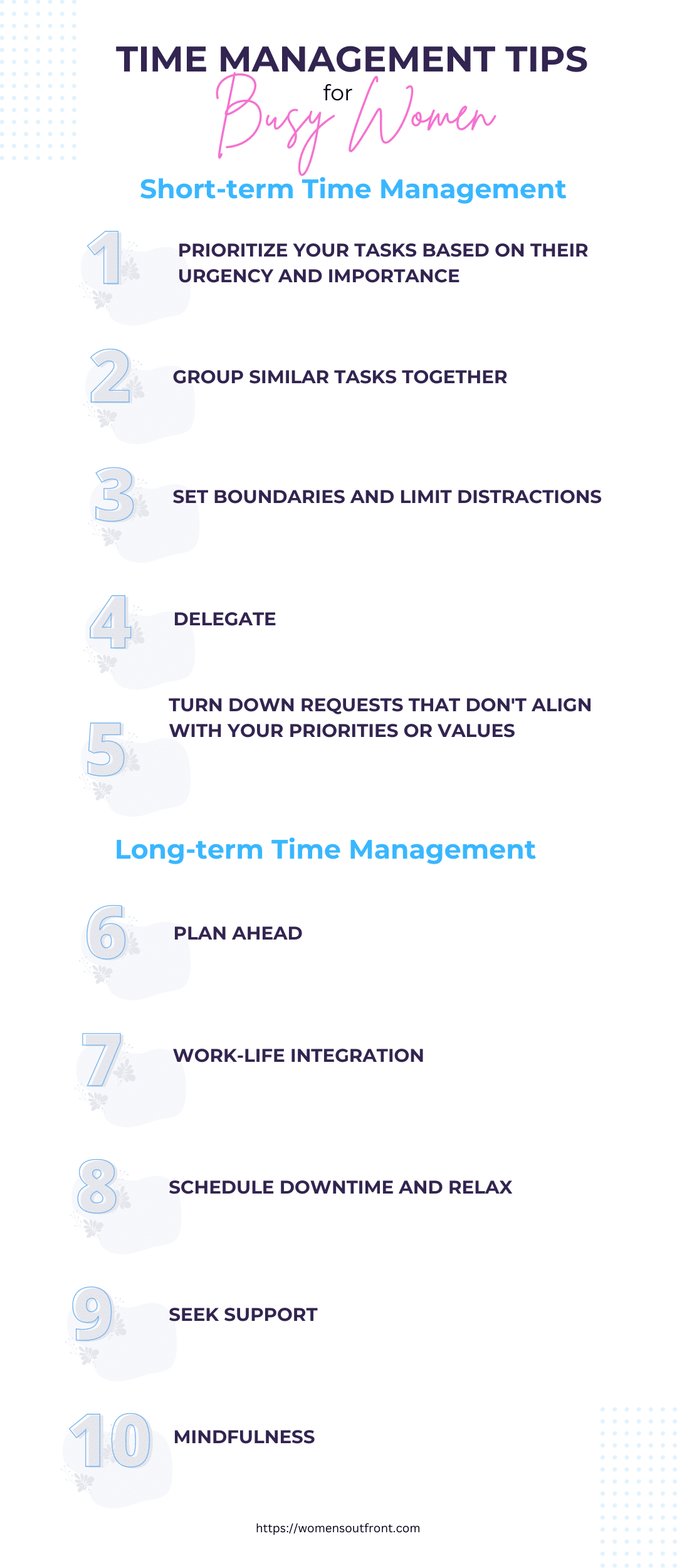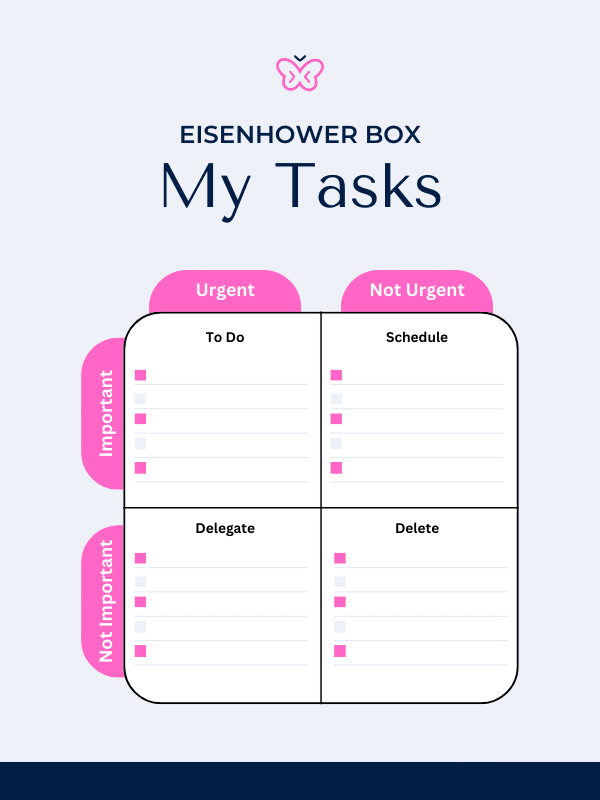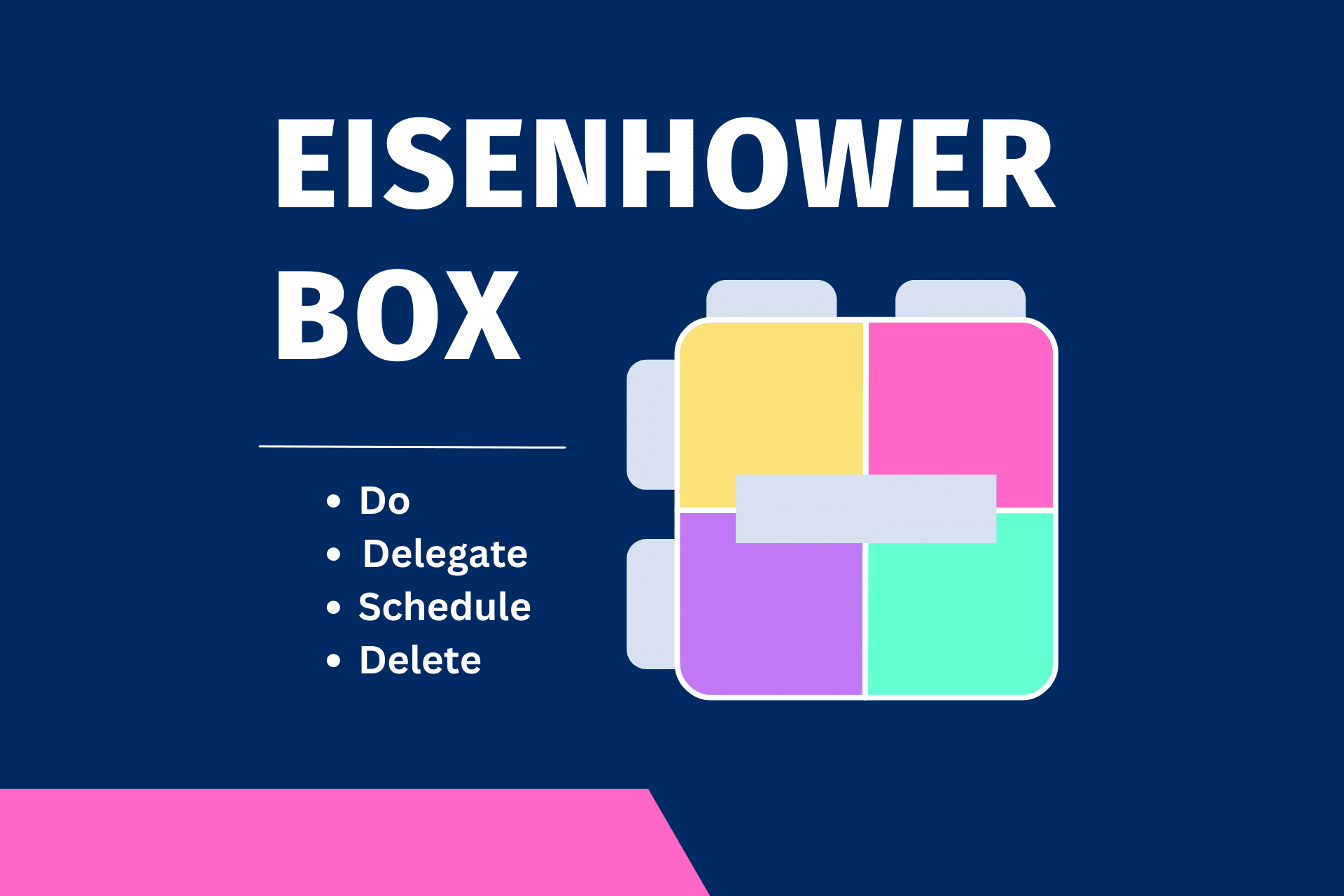Mastering the Clock and Living Your Best Life
Welcome, dear reader, to this oasis in the whirlwind of your busy life, a place designed to arm you with practical time management tips for busy women. We see you juggling multiple roles, spinning plates with grace and grit, all while the clock ticks faster each day.
We get it; time can feel like sand slipping through your fingers, no matter how tightly you grasp it.
Here’s the good news: it doesn’t have to be that way. This post promises to be your ally, offering useful strategies to help you master your minutes, conquer your calendar, and breathe easier. It’s time to transform that ticking clock from a relentless taskmaster into a loyal companion.
So, grab that cup of coffee, put your feet up, and let’s embark on this journey. A journey not into the depths of complexity but rather towards simplicity, practicality, and a little humor to brighten your day.
Ready? Let’s go!
Here's What You Will Find

Key Takeaways
Time Management Tips for Busy Women
Embrace Individuality: Time management is not a one-size-fits-all concept. It’s essential to adapt strategies to fit your unique lifestyle, respecting the rhythm of your personal and professional life.
Laugh It Off: Humor can make the journey towards effective time management more enjoyable. Light-hearted moments and laughter can reduce stress and make the process more human and relatable.
Celebrate Success: Small victories in time management are cause for celebration. Acknowledging progress boosts motivation and reinforces positive behaviors.
Sharing is Caring: Time management isn’t a solo sport. Share your experiences, insights, and tips with other women. A shared burden is a lighter burden—let’s conquer time collectively, one tick-tock at a time!

Are You Running Against Time? Let’s Change That!
Picture this: You’re zipping through a packed day, your eyes darting between the clock and your to-do list. Emails are piling up, meetings are back-to-back, and deadlines loom large. Your home is not too different. The kids need attention, dinner needs cooking, and somehow you’ve got to find time for self-care, too. Sound familiar?

You’re not alone. Time management is a common challenge that unites us all, particularly for women who deftly juggle multiple roles.
But imagine if there was a different way to navigate your day, a way that doesn’t involve feeling constantly on the edge, trying to beat the clock. Imagine transforming your relationship with time so it becomes your ally, not your adversary. That’s where we come in, and that’s what’s in this for you.
This post will explore a goldmine of practical, research-backed time management tips for busy women. We’ll keep it real and light and tailor the advice to your unique circumstances.
Time management isn’t just about doing things faster. It’s about doing the right things, at the right time, in the right way. Ready to reclaim your time and reorient your life?
Stay with us as we navigate this path together. You’re not just running against time anymore; you’re ready to change the game.
Why is Time Management Particularly Tricky for Women?
Before we whip out our array of time management tips, it’s essential to understand why time management can often feel like a Herculean task, especially for women. The challenges are indeed unique. The balancing act between professional responsibilities and domestic duties can make time feel like a scarce commodity.
Even Wonder Woman needs some downtime, right?
Consider the “double shift” that many women work – a full day in the professional world followed by home demands. Throw in additional roles like caregiver, chauffeur, counselor, and chef, and you’ve got a day that would stretch even the most efficient of timekeepers.
And what about the mental load? That endless, invisible list of tasks must be remembered and managed. Did Timmy remember his lunch? Is it time to schedule the car’s oil change? When is the dentist appointment again? This constant mental juggling act can turn minutes into moments of stress.
So, how does this impact your day-to-day life? The pressure can result in chronic stress, decreased productivity, and a feeling of being unable to catch up.
It might mean missed opportunities for relaxation and enjoyment, impacting your well-being. But here’s a heartening thought: understanding these challenges is the first step toward addressing them.
Now that we’ve acknowledged the elephant in the room let’s put our heads together to tame it.
After all, who runs the world?
We do! And it’s high time we showed the clock who’s boss.
What Do The Experts Say About Time Management?
Time management is more than just a buzzword; it’s a field of research with many studies exploring its many facets. So, let’s turn to the experts and see what they have to say.
First, let’s unpack what we mean by time management. According to a study in the Journal of Educational Psychology, time management involves organizing and planning how to divide your time between specific activities.
Essentially, it’s about working smarter, not harder.
The researchers found that effective time management can increase productivity and less stress; as busy women, we can all appreciate those results!
Furthermore, a study published in Work & Stress found a clear relationship between time management and lower stress levels—those who manage their time well experience less job-induced stress and greater job satisfaction.
Then there’s the surprising finding from the Journal of Applied Psychology research. This study suggested that successful individuals managing their time often experienced a better work-life balance.
Who knew a well-organized calendar could be the secret sauce for juggling those multiple roles?
Now, let’s bring this down from the lofty heights of academic research to the daily grind. In a nutshell, the experts tell us that managing our time effectively can lower our stress levels, boost productivity, and even balance our work-life see-saw.
Sounds like a win-win, right?
Let’s move forward then, equipped with this knowledge, and transform it into action. Stay tuned for practical, real-world strategies in our next section because it’s time for time to be on our side!

Let’s Get Real: Practical Time Management Tips for Busy Women
It’s time to roll up our sleeves and get to the heart of the matter. We’ve navigated through the why and the what of time management.
Let’s get to the how with some real, practical, and actionable time management tips.
Let’s make that clockwork for us, shall we?
Quick fixes: Time-saving hacks for immediate relief
The Power of Prioritization
One of the quickest ways to save time is to decide what deserves your time. Prioritize your tasks based on their urgency and importance. A simple 2×2 matrix, the Eisenhower Box, can be a handy tool.
Indeed, one of the quickest ways to save time is to decide what deserves your time. Prioritizing your tasks based on their urgency and importance is a key step in effective time management. A helpful tool for this is the Eisenhower Box, a simple 2×2 matrix.

The Eisenhower Box is named after President Dwight D. Eisenhower, who was known for his impressive productivity. It sorts tasks into four categories:
- Urgent and important (Do): These tasks, like a looming project deadline or a family emergency, need immediate attention.
- Important but not urgent (Plan): These tasks contribute to long-term goals but don’t need to be tackled immediately. For example, exercise, reading, and personal development activities fall into this category.
- Urgent, but not important (Delegate): These tasks need to be done soon, but not necessarily by you. If possible, delegate these tasks to free up your time—for instance, routine administrative work or certain household chores.
- Not urgent and not important (Eliminate): These tasks don’t contribute to your goals and are not time-sensitive. Consider eliminating these tasks, like excessive time on social media or unnecessary meetings.
The beauty of the Eisenhower Box is its simplicity. It forces you to decide about your tasks and helps you identify what truly deserves your time, giving you a clearer picture of where to direct your energy and focus.
Batch Processing
Grouping similar tasks together, often called “batching,” is a highly effective way to boost efficiency. This method works on the principle that our brains function more effectively when focused on one type of task at a time rather than constantly switching gears.
For instance, dedicate specific time slots for this activity instead of intermittently checking and responding to emails throughout the day, which can interrupt your flow and decrease productivity. Maybe you choose to tackle emails first thing in the morning and then again in the late afternoon.
Similarly, running errands can be grouped together into a single outing. Instead of making multiple weekly trips to the grocery store, post office, or bank, plan one or half a day to complete all these tasks. This saves you time and the mental energy of separately planning and executing these tasks.
The same approach can be applied to scheduling appointments. Have a specific time in your week when you look at the upcoming schedule and plan all your personal, professional, or medical appointments.
By grouping similar tasks together, you’re not only saving time, you’re also reducing cognitive load and mental fatigue, leaving you with more energy to dedicate to other important tasks and activities.
Set Boundaries and Limit Distractions
Setting boundaries around your work time is crucial in managing time effectively, especially in today’s interconnected world. Establishing clear boundaries helps to minimize distractions and maximizes productivity during your work hours.
One way to do this is by muting notifications during your dedicated work periods. Our devices are constantly buzzing with social media updates, news alerts, and emails, which can significantly disrupt our focus. Use the “Do Not Disturb” or “Focus” modes on your devices or simply mute notifications for non-essential apps. This will allow you to concentrate on the task at hand without the constant interruption of pinging notifications.

Creating a quiet and conducive workspace is another important step. This doesn’t necessarily mean you need a separate office room; a quiet corner in your living room or even a cleared space at your kitchen table can do the trick. The key is to have a designated space for work, which signals to your brain that it’s time to get down to business.
Communicating your work schedule to your family or housemates is equally important. For example, you could say, “I’ll be in work mode from 9 AM to 12 PM so I won’t be available for non-urgent matters.” This way, they’ll know not to interrupt you during these hours unless absolutely necessary.
Setting these boundaries protects your work time, maintains your focus, and improves your overall productivity. It’s about taking charge of your time and making it work for you.
Delegate, Delegate, Delegate
You don’t have to do everything at work or at home. Delegating appropriately can free up huge chunks of your time.
The mantra “I have to do it all” can sometimes become a roadblock in effective time management. It’s crucial to remember that you don’t have to do everything yourself, be it at work or at home. Delegating tasks appropriately can free up significant amounts of your time and can also empower others by entrusting them with responsibilities.
Consider which tasks can be delegated to colleagues or team members at work. These might be tasks that are not central to your role or ones where someone else has more expertise. For example, if you’re leading a project but graphic design isn’t your forte, consider delegating the creation of the project presentation to a skilled designer on your team.
At home, the same principle applies. Family members can often share tasks like cleaning, cooking, and laundry. Perhaps your partner could take over the cooking duties a few nights a week, or older children could help out with cleaning tasks. If your budget allows, consider hiring professional help for certain tasks like house cleaning or yard maintenance.
Remember, delegating isn’t a sign of weakness or inefficiency. Instead, it’s a powerful tool that lets you focus on what matters most to you professionally and personally. It’s about working smarter, not harder. So, go ahead and delegate away—your calendar will thank you!
The Magic of “No”
Turning down requests that don’t align with your priorities or values is okay.
Your time is indeed precious, and treating it as such means being selective about the requests and commitments you agree to. It’s essential to remember that turning down requests that don’t align with your priorities or values is not just okay—it’s necessary for effective time management.
Think of your time as a garden that needs nurturing and care. Each commitment or task you take on is like a plant that needs a portion of your water, sunlight, and attention to grow. If you try to grow too many plants, you might not have enough resources for all, and the garden—much like your time—becomes overcrowded and less productive.

For instance, imagine you’re asked to join a committee at your child’s school. While you’re passionate about education and love supporting your child, you realize the time commitment for this role is considerable and would eat into the hours you’ve set aside for your professional development or quality family time. Recognizing that this request doesn’t align with your current priorities, it’s not just okay, but it’s crucial that you feel empowered to decline politely.
Similarly, if you’re asked to take on a project at work that doesn’t fit with your professional goals or values—for instance, if it involves something you’re ethically uncomfortable with—it’s important to voice your concerns and, if necessary, say “No.”
Remember, every time you say yes to one thing, you’re effectively saying no to something else using your limited time. Therefore, saying no to things that don’t serve your priorities or values is a way of saying yes to what truly matters to you. It’s an act of respect—towards others and, more importantly, towards yourself and your time.
The big picture: Strategies for long-term time management
Plan Ahead
Utilizing a digital or physical planner is a practical strategy for managing time effectively. The simple act of writing down or typing out your tasks, deadlines, and appointments can provide a clear picture of your schedule and responsibilities. It lets you see your time visually mapped out, making managing it much easier.
For example, if you’re more of a traditionalist who enjoys the physical act of writing, you might prefer a physical planner or agenda. You could color-code different types of activities—red for work tasks, green for personal appointments, blue for relaxation time, and so forth. This lets you quickly see your schedule’s balance (or imbalance) at a glance.

If you’re technologically inclined or always on the go, a digital planner might be more up your alley. Apps like Google Calendar, Outlook, or Asana allow you to input tasks, set reminders, and even share your calendar with others if necessary. You can access these planners from any device—be it your computer, tablet, or phone—making it easy to update or check your schedule anytime, anywhere.
For instance, you might schedule a weekly planning session every Sunday evening. You map out your tasks, deadlines, and appointments for the coming week during this time. Seeing everything laid out visually can help you spot any potential time conflicts or overly busy days in advance, allowing you to rearrange as necessary to maintain a manageable and balanced schedule.
Essentially, a planner is your personal time management tool, helping you stay organized, avoid double booking, and control your precious time.
So, whether you’re Team Pen-and-Paper or Team Digital, start planning your way to better time management today!
Work-Life Integration
The traditional boundaries between “work” and “life” are increasingly blurred in our modern, interconnected world. Rather than attempting to separate the two rigidly, many people find it beneficial to integrate them to create a harmonious work-life blend.
Flexible work hours are one way to achieve this. Instead of sticking to the traditional 9-5 schedule, you might negotiate with your employer to start and finish work at times that suit your personal needs better.
For example, if you’re a parent, you might prefer starting work earlier in the morning and finishing in the afternoon to coincide with your child’s school schedule. This way, you can fulfill your professional responsibilities while also being present for school pick-ups, homework help, or after-school activities.

Working from home, where possible, is another strategy. This can significantly reduce commuting time, which can then be redirected to other meaningful activities. Moreover, the comfort of your home might provide a more relaxed work environment, making the work feel less draining and more integrated into your daily life.
Lastly, sharing family calendars can help everyone stay on the same page about each other’s schedules and responsibilities. For example, you could create a Google Calendar that is shared with all family members, where everyone can add their work schedules, school events, appointments, and other commitments. This transparency helps to avoid scheduling conflicts and enables family members to support each other when needed.
Remember, the goal is not to let work overtake your life but to create a flexible and comfortable blend where both can coexist. Each person’s ideal work-life blend will look different, and that’s okay! It’s all about finding what works best for you.
Self-Care Isn’t Selfish
Scheduling downtime and relaxation is just as important as scheduling work tasks and appointments, if not more so. It may seem counterintuitive, especially when you’re juggling a lot, but this dedicated time off can dramatically improve your long-term productivity and overall wellness.
Think of downtime as a regular tune-up for your car. Without it, even the best car would eventually break down from wear and tear. The same applies to us; without rest, our physical health, mental well-being, and productivity levels could take a hit.
So, how do you put this into practice? The key lies in treating relaxation time with the same respect and importance as any other appointment on your calendar.

For example, you might designate a specific “wind-down” period each evening to engage in relaxing activities like reading, listening to music, or taking a leisurely walk. This should be a non-negotiable slot on your daily schedule.
Alternatively, you could schedule a longer relaxation session once a week, perhaps on weekends. This could be anything from a yoga class to a leisurely brunch with friends or even a peaceful afternoon with no plans at all.
Remember, there’s no one-size-fits-all when it comes to relaxation. What matters is that the activity genuinely relaxes and rejuvenates you. By consciously scheduling and prioritizing this downtime, you’ll take
an important step towards better time management and a healthier, happier life. After all, a well-rested you is a more productive you!
Seek Support
Building a supportive network around you is a great strategy for managing time more effectively and maintaining balance in your life. This network can include community members, friends, family, and professionals who can help share your responsibilities and provide emotional support.
For example, consider setting up a carpool system with other parents in your neighborhood for school drop-offs and pick-ups. This saves time and allows for social interaction and community building.
Similarly, don’t hesitate to contact friends or family members when you need a hand. These connections can offer invaluable support, whether it’s assistance with errands or simply having someone to talk to when you’re feeling overwhelmed.

In addition, you might consider engaging professionals for certain tasks. For instance, hiring a cleaning service for your home or a virtual assistant for administrative tasks can significantly lighten your load, freeing up time for other pursuits.
Remember, it’s not about offloading everything onto others but rather about building a reciprocal support system that benefits everyone involved. Time management isn’t a solo journey – it’s a community effort!
Mindfulness
Practicing mindfulness, or being fully present in each task, is a proven strategy for reducing stress and improving productivity. When we’re constantly thinking ahead to the next task, we’re not fully engaged in what we’re currently doing, leading to mistakes, decreased efficiency, and increased stress.
For example, let’s say you’re preparing a report for work, but your mind is already on the dinner you must cook for your family. In this scattered state of mind, it’s easy to overlook details in your report or make errors that you’ll need to correct later—both of which will take up more time in the long run. On the other hand, if you fully focus on the report, you’re more likely to complete it efficiently and accurately, saving you time for the next task.
Similarly, if you spend time with your family but your mind is on work, you’re not fully appreciating or enjoying the present moment. This can lead to feelings of dissatisfaction and burnout over time. Being fully present can derive more joy from your time with your loved ones.

A simple way to practice mindfulness is by focusing on your senses. For instance, when you’re eating dinner, focus on the taste of the food, its texture, and its smell. This enhances your enjoyment of the meal and gives your mind a break from constant planning and rushing.
So, slow down, breathe, and immerse yourself fully in each task. You’ll likely find that this practice improves your productivity and brings more peace and satisfaction to your daily life.
Remember, these tips aren’t a one-size-fits-all solution, and that’s okay. The goal is to try different strategies, figure out what works for you, and remember to give yourself grace along the way.
Managing your time doesn’t mean packing every second with tasks—it’s about finding balance and ease in your day. And when that happens, even Mondays start looking a little friendlier.
So here’s to putting the “manage” in time management!
One Size Doesn’t Fit All: Customizing Time Management Strategies
In a world filled with many hats to wear and roles to play, there’s no such thing as a universal time management strategy. Much like a one-size-fits-all dress may not fit every body type, time management isn’t a one-and-done deal. It’s a dynamic process that changes with our evolving needs and situations.
So, let’s talk about customizing these strategies to fit your life.
Respecting Individuality: Adapting Strategies to Fit Your Life
Every woman has a unique life rhythm, influenced by her career, family, hobbies, health, and personality. It’s essential to respect this individuality when implementing time management strategies.
Perhaps you’re a night owl and find you’re most productive when the world is asleep. If so, scheduling your most demanding tasks for the late hours might work for you.
Or maybe you’re juggling parenting with a demanding career. In that case, shared family calendars or chore charts could be your go-to solution. The key is experimenting, adjusting, and finding a method that fits your personal and professional life like a glove.
Intersectionality in Time Management: Different Strokes for Different Folks
Intersectionality, a term coined by scholar Kimberlé Crenshaw, reminds us that women’s experiences are shaped by various factors like race, age, socioeconomic status, and more. This lens of intersectionality is as relevant to time management as it is to social justice.
For instance, a single mother working two jobs will have different time management needs than a retiree volunteering at a community center. Similarly, a woman with a disability may need to approach her schedule differently than a CEO of a tech startup.
Respecting these differences is crucial. As we share these time management strategies, we encourage you to adjust them to your circumstances, needs, and realities.
Remember, the goal isn’t to perfectly emulate someone else’s schedule—it’s about finding what works for you and your unique life.
And if you find a strategy that works wonders, don’t keep it to yourself. Share it! Your unique experiences might offer a solution that another woman has been seeking. We’re all in this together, ladies, one tick-tock at a time!
Are You Ready to Laugh Your Way Through Time Management?
In the midst of all this talk about scheduling, prioritizing, and delegating, let’s not forget one crucial ingredient that can make any task more enjoyable—humor. Who says time management has to be all work and no play? Let’s take a moment to share some light-hearted tales and explore how humor can help us in our quest for better time management.
Light-Hearted Time Management Tales
Remember the time when you were so engrossed in sorting your emails by urgency, sender, and whether they included pictures of cute puppies that you forgot your Zoom call was on mute for a good fifteen minutes? Or when you mixed up your personal and work calendar and took your dog to a business meeting, only to be hailed as the office mascot?
We’ve all been there, haven’t we? Trying to be efficient, only to end up with these hilariously human moments. The moral of the story?
Time management, like life, is filled with imperfections and unexpected twists. And sometimes, the best thing to do is to laugh it off and move on.
How Humor Can Make Time Management More Enjoyable
Humor isn’t just good for a giggle. Research shows that it can help reduce stress, enhance mood, and even boost productivity. That’s right—those funny cat videos may not be the productivity killers you thought they were!
But the key here is balance. While we all love a good laugh, our tasks must be completed.
So, take a humor break the next time you feel overwhelmed by your to-do list. Watch a funny clip, share a joke with a coworker, or just laugh at the absurdity of trying to squeeze 25 hours into a 24-hour day.
And who knows, maybe someday we’ll find a way to laugh ourselves into a time warp, creating that elusive 25th hour.
But until then, let’s learn to manage our time effectively, laugh at our foibles, and remember, as the saying goes, “Time flies when you’re having fun!” And if it doesn’t… well, at least you’re having fun, right? Now that’s what we call winning!
Time Management Mastery: How Can You Empower Yourself?
Let’s flip the narrative around time management. Instead of seeing it as a constant struggle against the clock, let’s envision it as a way to empower ourselves.
Yes, you heard it right. Time management can empower us to regain control over our lives and celebrate our successes. So, let’s explore how we can master time management to empower ourselves.
Tools to Keep You in Control of Your Time
There’s a wealth of tools out there designed to help us stay in control of our time, and finding the ones that suit you best is a powerful step. From digital calendars like Google Calendar or Outlook to to-do list apps like Todoist or Trello, these tools can help organize our lives in a visually appealing and manageable way.
Moreover, try using time trackers like RescueTime to understand where your time is spent or the Pomodoro technique to break your work into manageable chunks.
Remember, these tools are here to serve you, not vice versa. Use them as your allies in your quest to manage time effectively.
Celebrating Success: The Importance of Acknowledging Your Victories
Managing your time successfully is a significant accomplishment and deserves celebration. Did you complete a project ahead of schedule because of your awesome time management skills? Celebrate it! Were you able to sneak in a quick workout because you efficiently managed your morning tasks? Give yourself a pat on the back!
Celebrating these victories, big and small, boosts your motivation and reinforces the positive behaviors that led to your success. It’s also a wonderful way to remind yourself of your capabilities and the progress you’re making.
Remember that managing your time effectively isn’t just about productivity—it’s about taking charge of your life. It’s about saying “yes” to things that truly matter to you and “no” to things that don’t. It’s about making time for self-care, family, hobbies, and not just work.
And in the midst of all this, don’t forget to laugh, celebrate your victories, and share your time management stories and strategies with others. After all, a shared burden is a lighter burden. Let’s conquer time, ladies, one tick-tock at a time!
Pass It On: How Sharing These Tips Can Help Other Busy Women
And just like that, we’ve journeyed through the realm of time management tips for busy women, recognizing that this isn’t a one-woman show but a collective act. Time management, at its heart, is about fostering a more balanced, fulfilling, and empowering life. And isn’t that something worth sharing?
The Power of Collective Action: Time Management Isn’t a Solo Sport!
The more we share our experiences, insights, and tips, the more we can help each other navigate our unique time management challenges. It’s like creating a chain of empowerment where one woman’s victory becomes a stepping stone for another’s. So, let’s pass these tips along and uplift each other!
Easy Ways to Share These Tips with Others
Consider this post as a toolbox filled with time management strategies that you can freely share with the women in your life. Share it on social media, send it via email, or even discuss it over a cup of coffee with your friends.
Remember, each one of us has the power to inspire change, one time management tip at a time. And as you journey through your own time management adventures, we’d love to hear about your experiences, victories, and even the not-so-perfect moments.
Don’t hesitate to reach out if you have any questions or need any help. We’re here for you, and together, we’ll not just manage time—we’ll master it!
So, here’s to empowering ourselves and each other. Let’s spread the word, and may our collective journey toward effective time management be filled with success, laughter, and many shared stories. Now, go forth, manage your time like a pro, and don’t forget to pass it on!
More on Time Management Tools

Eat the Frog Technique: Transform Your To-Do List into a Done List!

9 Benefits of Time Management: How to Add More Hours to Your Day and Achieve Your Dreams!

Time Management for Women: Unlock the Life-Changing Power of Every Second!

Pareto Principle (80/20 Rule): How to Get More by Doing Less!

Pomodoro Technique: The Revolutionary Method to Tackle Your To-Do List!

Examples of Boundaries: Set Them Now, Reap the Rewards Forever!

How to Say No: The Game-Changing Skill You Wish You Learned Sooner!

Eisenhower Box: Quadruple Your Productivity in Just One Day!
Related Articles
Eat the Frog Technique: Transform Your To-Do List into a Done List!
9 Benefits of Time Management: How to Add More Hours to Your Day and Achieve Your Dreams!
101 Powerful Time Management Quotes to Transform Your Day!
Time Management for Women: Unlock the Life-Changing Power of Every Second!
Time Management Tips for Busy Women: Squeeze More Out of Your Day with These Eye-Opening Techniques!



